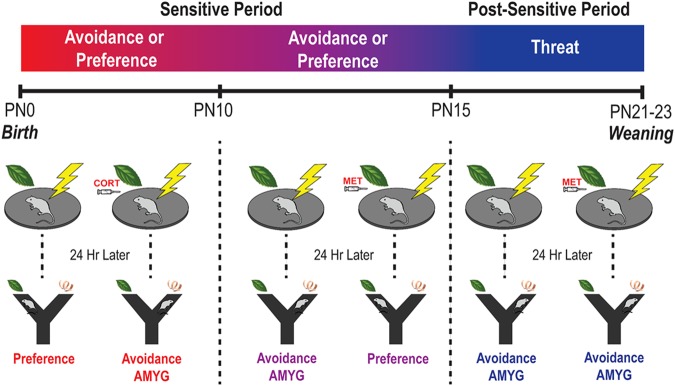Figure 1.
Schematic of developmental framework and experimental design. This set of studies capitalizes on known developmental milestones in infant amygdala-dependent threat learning to assess the underlying neural mechanisms of infant memory development. Pup amygdala-dependent threat learning shows developmental transitions and a unique dependence on the stress hormone corticosterone (CORT). At PN10, amygdala-dependent threat learning emerges in infant rats18. Before PN15, this learning can be blocked if CORT levels are inhibited90,92 and induced if CORT levels are increased. Specifically, in pups younger than PN16, amygdala CORT must be present to support avoidance learning: if CORT is low (e.g. via metyrapone (MET) injection), this avoidance learning will be blocked and amygdala-independent preference for the odor is observed. On the other hand, elevated amygdala CORT will permit amygdala-dependent threat learning, which occurs naturally in pups older than PN10 and can be induced in pups <PN10 via injection, a fearful mother or early life maltreatment23. Because CORT can turn learning on/off before PN15, we term this learning “Sensitive Period”. After PN15, “Post-Sensitive Period”, the ability of CORT to switch amygdala-dependent learning on/off has terminated58. At this time, conditioning with natural shock-induced CORT increases or with CORT blocker (MET) does not switch off avoidance learning and all pups learn and remember to avoid the odor. Here, we employ Pavlovian conditioning in rats in the sensitive period and post-sensitive periods and test memory in a Y-maze 24 hours after conditioning.

